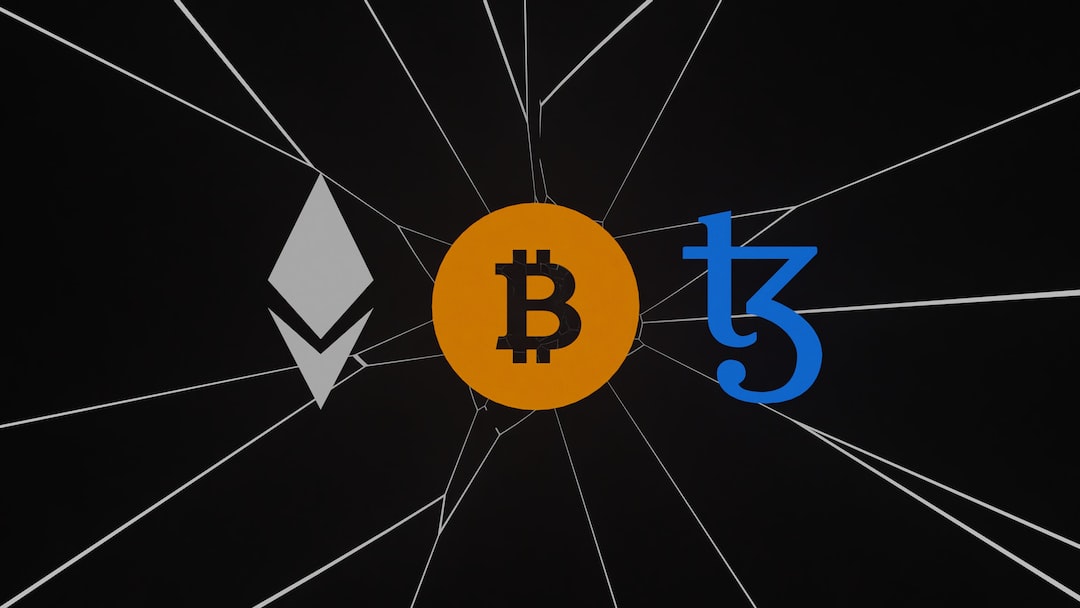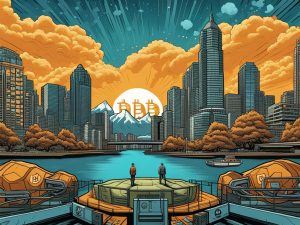Understanding Ardor Coin: The Future of Blockchain Interoperability
Greetings, cryptocurrency enthusiast! Today, we are going to delve into the world of Ardor Coin and explore how it is shaping the future of blockchain interoperability. If you have ever wondered how different blockchains can communicate and exchange data seamlessly, you are in for a treat. So, let’s dive in!
What is Ardor?
Ardor is a revolutionary blockchain platform that aims to solve the issue of blockchain interoperability. It was developed by Jelurida, a Swiss software company known for its expertise in blockchain technology. Unlike other blockchain platforms, Ardor provides a unique solution by introducing the concept of child chains.
Instead of every single transaction being recorded on one main chain, Ardor creates multiple interconnected child chains. These child chains are independent and customizable, allowing different entities to have their own blockchain with their specific rules, while still being able to securely communicate with each other.
How does Ardor achieve interoperability?
Here’s where it gets interesting! Ardor’s parent-child chain architecture enables interoperability between different blockchains within its ecosystem. The parent chain handles security and consensus for all the child chains, while each child chain can have its own specific use case and features.
By separating the responsibilities of each chain, Ardor allows child chains to operate independently while benefiting from the security and reliability of the parent chain. This unique design ensures that transactions and data can be exchanged seamlessly between different chains without compromising security.
The benefits of Ardor
Now, let’s explore the advantages of Ardor and why it holds such promise for the future of blockchain technology.
1. Scalability: Ardor’s architecture allows for scalability by reducing the burden on the main chain. As each child chain operates independently, the overall network’s performance is significantly improved, enabling a higher number of transactions and greater efficiency.
2. Customization: With Ardor, organizations and businesses can create their own child chains with customizable rules, parameters, and functionalities. This flexibility enables tailored solutions for specific industries and use cases.
3. Cost-effectiveness: Ardor’s architecture eliminates the need for separate infrastructure for each blockchain, reducing costs for businesses and organizations. By sharing the parent chain, companies can enjoy the benefits of blockchain technology without the heavy investment associated with building and maintaining a standalone blockchain.
4. Security: Ardor implements advanced security measures to protect the parent-child chain ecosystem. The parent chain’s consensus mechanism ensures the overall security of the network, making it resistant to potential attacks or malicious activities.
Use cases for Ardor
Ardor’s versatility opens up a wide range of potential use cases. Let’s take a look at a few examples:
1. Supply Chain Management: Different participants in a supply chain can have their own dedicated child chains, allowing for better transparency, traceability, and secure data exchange between different stakeholders.
2. Tokenized Assets: Ardor can be used to create and manage tokenized assets, facilitating the tokenization of real-world assets such as real estate, art, or commodities. These assets can be easily traded on Ardor’s decentralized exchange, or even transferred to other blockchains.
3. Decentralized Applications: Businesses looking to develop decentralized applications (dApps) can leverage Ardor’s child chains to build and deploy their applications easily. With the platform’s scalability and customizability, developers can create robust and efficient dApps to cater to various industries.
FAQs
Q: How does Ardor differ from other blockchain platforms?
A: Ardor’s unique parent-child chain architecture sets it apart from other blockchain platforms. It offers a level of interoperability and scalability that is unparalleled, making it an ideal choice for businesses and organizations seeking blockchain solutions.
Q: Can I mine Ardor coins?
A: Ardor’s parent chain is responsible for securing the network, and it uses a proof-of-stake consensus algorithm. Therefore, mining is not necessary. Users can participate in the network by staking their coins and securing the blockchain instead.
Q: How can I get started with Ardor?
A: To get started with Ardor, you can visit the official Ardor website and download the Ardor desktop wallet. From there, you can acquire Ardor coins and explore the various child chains and applications built on the platform.
Q: What sets Ardor apart from similar projects?
A: While there are other blockchain projects that aim for interoperability, Ardor’s unique architecture and its focus on child chains make it stand out. The combination of scalability, customizability, and security sets Ardor apart as a leading solution for blockchain interoperability.
Congratulations! You now have a better understanding of Ardor Coin and its groundbreaking approach to blockchain interoperability. With its unique parent-child chain architecture, Ardor paves the way for a more interconnected blockchain ecosystem. So, why not explore Ardor further and see for yourself how it can shape the future of decentralized applications and blockchain-based business solutions?





 By
By

 By
By
 By
By

 By
By